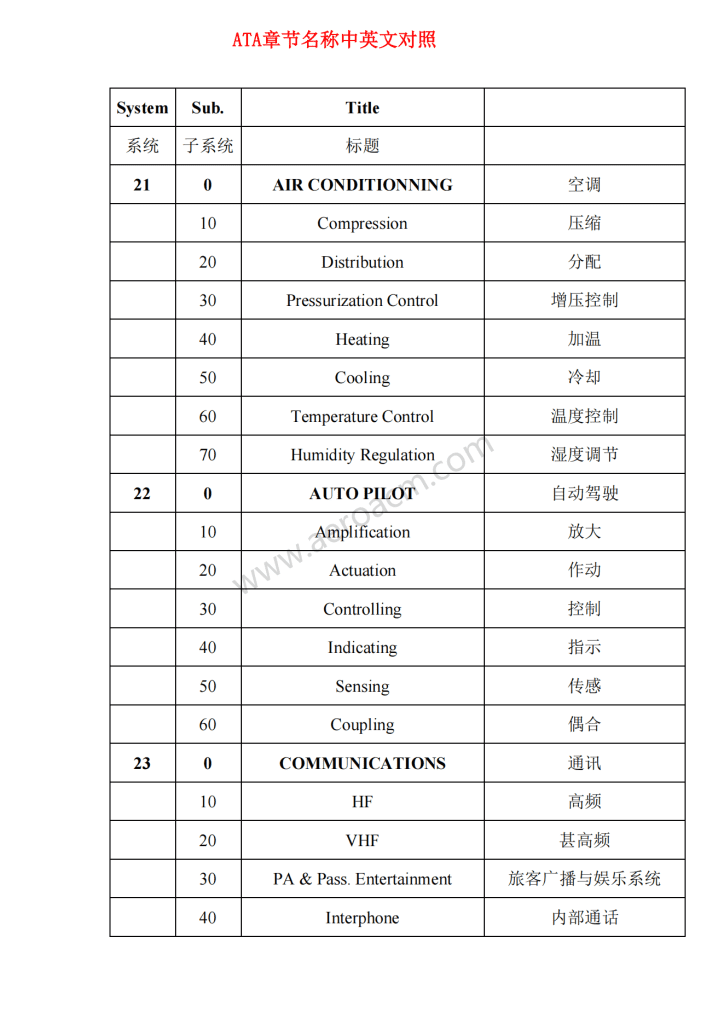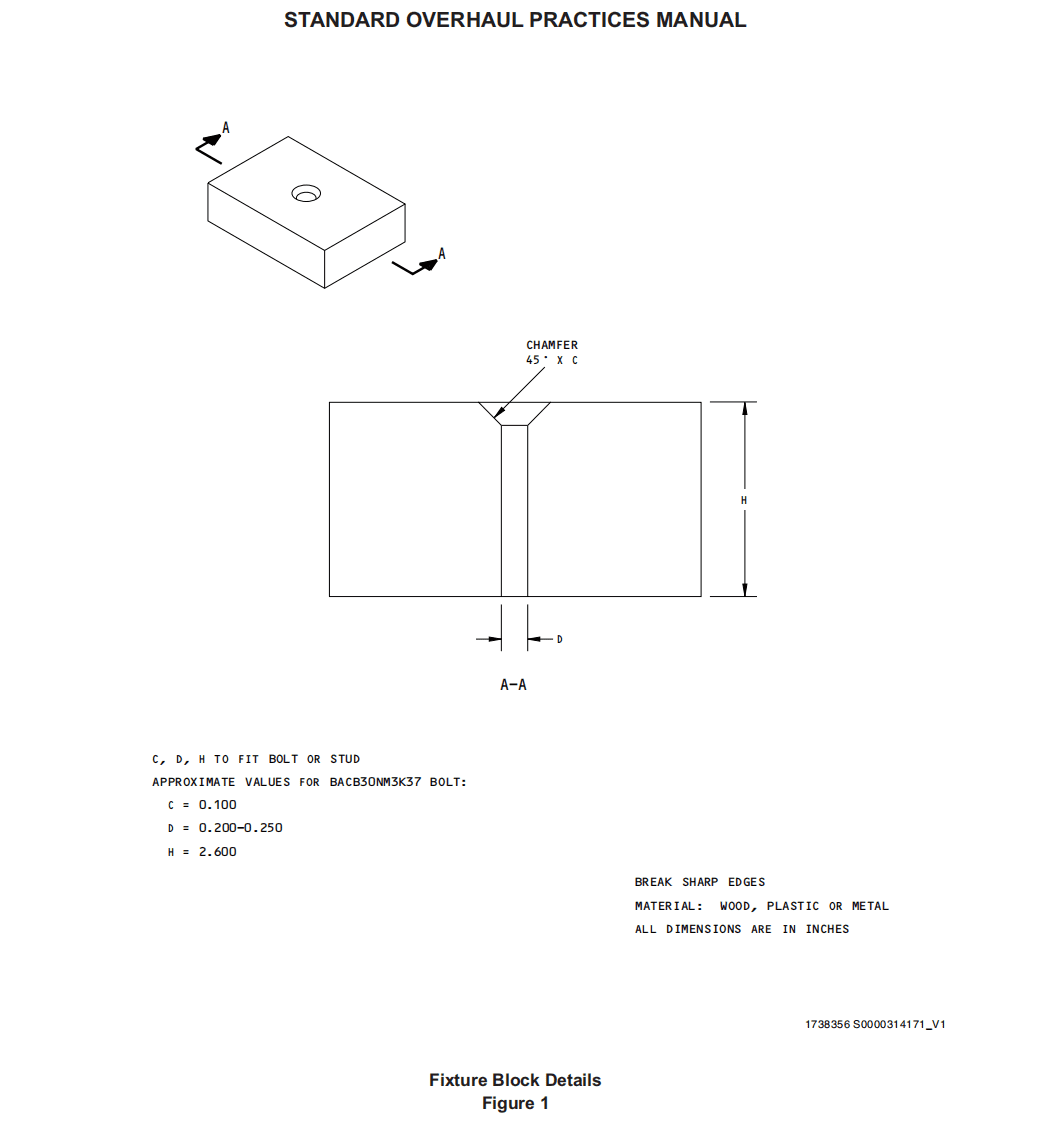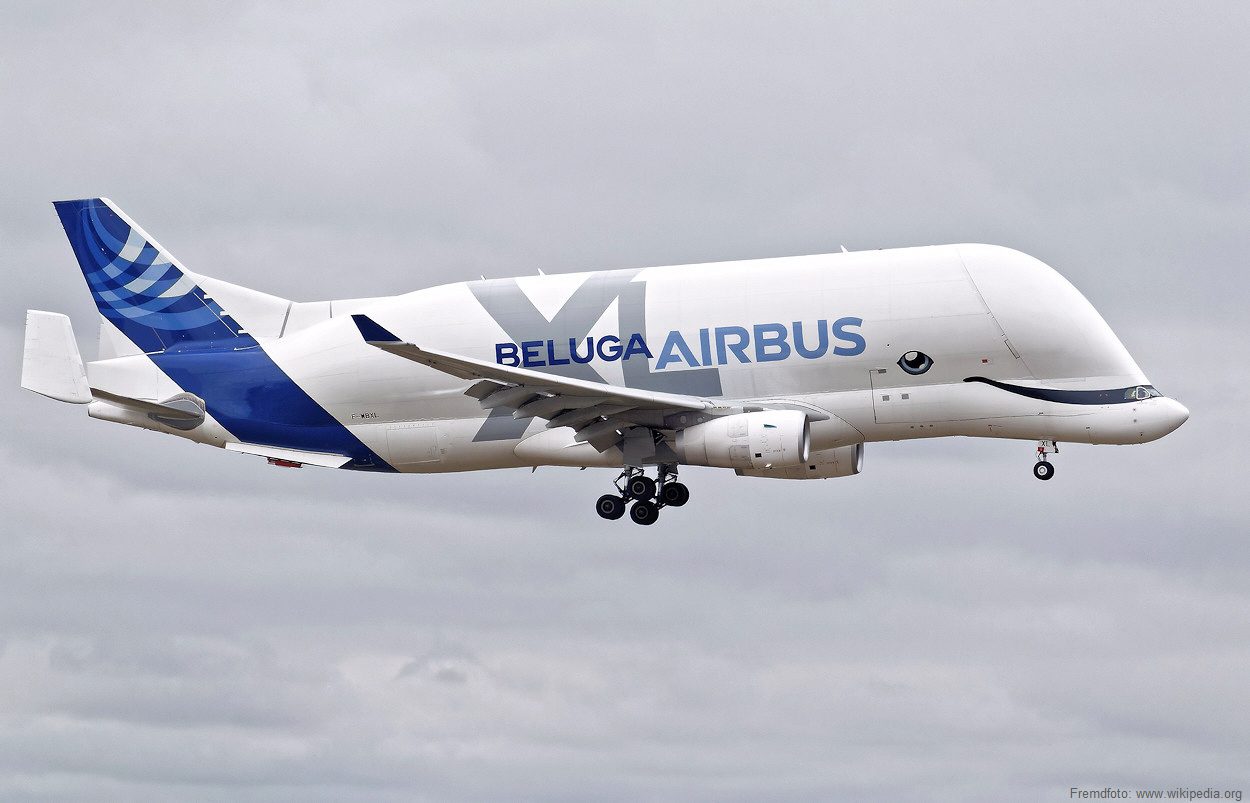低氢脆锌-镍合金电镀
LOW HYDROGEN EMBRITTLEMENT ZINC-NICKEL ALLOY PLATING
1. INTRODUCTION 介绍
A. The data in this subject comes from Boeing Process Specification BAC 5680. Access to the Boeing Process Specification is available.
本主题中的数据来自波音工艺规范 BAC 5680。可查阅波音工艺规范。
NOTE: Stylus Zinc-Nickel plating as specified in BAC 5664 is optional for local areas not larger than 72 square inches on components with no load applied to the parts during the plating procedure.
注: BAC 5664 中规定的触针锌镍电镀是可选项,用于部件上不大于 72 平方英寸的局部区域,电镀程序期间不对零件施加负载。
B. The data is general. It is not about all situations or specific installations. Use this data as a guide to help you write minimum standards.
数据为通用数据。并非适用于所有情况或特定安装。请将此数据作为帮助您制定最低标准的指南。
C. These procedures are recommended to prevent problems which could decrease the service life of the component.
建议使用这些程序来防止出现可能会缩短部件使用寿命的问题。
D. The types and classes are the same as those specified in BAC 5680:
类型和等级与 BAC 5680 规定的相同:
(1) Types
类型
(a) Type 1: As plated (no supplementary chromate or phosphate treatment)
类型 1:电镀(无铬酸盐或磷酸盐补充处理)
(b) Type 2: With supplementary chromate treatment
类型 2:补充铬酸盐处理
1) Grade A – Hexavalent chromate treatment
A 级 – 六价铬酸盐处理
2) Grade B – Trivalent chromium treatment
B 级 – 三价铬处理
If no Grade is specified, either Grade may be used.
如未规定等级,可使用任一等级。
(c) Type 3: With supplementary phosphate treatment
类型 3:补充磷酸盐处理
(d) When the overhaul instructions do not specify the Type, use Type 2.
大修说明未规定类型时,使用类型 2。
E. This plating is usually used on low alloy, high strength steels, such as those heat-treated above 220 ksi. For other alloys, steel and CRES alloys with lower strength heat treat conditions, refer to AMS2417 or BAC 5637.
该电镀通常用于低合金、高强度钢,如热处理超过 220 ksi 的钢。对于强度较低的其他合金、钢和 CRES 合金的热处理条件,请参阅 AMS2417 或 BAC 5637。
F. Refer to SOPM 20-00-00 for a list of vendor names and addresses.
供应商名称和地址清单请参阅 SOPM 20-00-00。
2. MATERIALS 材料
NOTE: Equivalent substitutes can be used.
注: 可使用同等替代品。
A. Alkaline Zinc-Nickel Solution
碱性锌镍溶液
(1) Atotech Ecolozinc Zinc Sol 2272 (zinc hydroxide concentrate containing 22 oz/gal Zn and 72 oz/gal NaOH)
(2) Atotech Reflectalloy ZNA-92 Ni-C (nickel concentrate containing 17.33 oz/gal Ni)
(3) Atotech Reflectalloy ZNA-C9300 Carrier
(4) Atotech Reflectalloy ZNA-C9400 Carrier
(5) Atotech Reflectalloy ZNA ZS (zinc soda concentrate containing 4.0 oz/gal Zn and 55.14 oz/gal NaOH)
(6) Dipsol IZ-C17+MS, Concentrate for Make-Up, containing approximately 4.2 oz/gal (31.2 g/L) Zn, 15.7 oz/gal (117 g/L) NaOH, 0.82 oz/gal (6.2 g/L) Ni and 26.37oz/gal (197.6 g/L) Ni Stabilizer
(7) Dipsol IZ-C17+Ni, Concentrate Nickel solution for replenishment, containing approximately 8.7 oz/gal (65 g/L) Ni
(8) Dipsol IZ-C17+B, Nickel stabilizer
(9) Dipsol NZ-777, Concentrate Zinc solution for replenishment, containing approximately 20.8 oz/gal (155.9 g/L) Zn and 70.7 oz/gal (527.6 g/L) NaOH
(10) Dipsol F-0529, Additive for replenishment
B. Anode Hooks, titanium, Monel, nickel plated, stainless steels
阳极挂钩,钛,Monel,镀镍,不锈钢
C. Anodes
阳极
(1) Nickel: 99 percent nickel, slab, rod, bars
(2) Nickel: Carbon-nickel, cast and rolled
(3) Nickel plated rod or other form/configuration with the nickel plating completely covering the CRES or other suitable substrate
(4) Platinum or platinized titanium
D. Chemicals
化学品
(1) Fluoboric Acid, 42 to 50 percent, Technical Open
(2) Hydrochloric Acid, 22 degrees Be’, or 37 percent Technical, ASTM E1146 or JIS-K-1310
(3) Nitric Acid, 40 degrees or 42 degrees Be’, Technical, A-A-59105
(4) Sodium Hydroxide, Flake or Granulated, Technical, ASTM D456 or 96 percent or solution of 50 percent by weight minimum
(5) Sulfuric Acid, 66 degrees Be’, Plating Grade, O-S-801 or better
E. Chromate Treatment (Type II Supplemental)
铬酸盐处理(第二类补充)
(1) IC-A
(a) EPI E-Chrome 864-A
(b) Rohm and Haas Passivator Salt SL-11
(2) IC-B
(a) EPI E-Chrome 864-B
(b) Rohm and Haas Passivator Salt SL-12
(3) Dipsol IZ-258S, Iridescent Chromate
(4) Dipsol IZ-258R, Iridescent Chromate
(5) Dipsol IZG-265E, Black Chromate
(6) Dipsol IZ-268S, Iridescent Chromate
(7) McGean-Rohco, Inc. Rodip ZN-NI Yellow, Chromate Conversion Coating
(8) Atotech Rodip ZNA-Yellow, Chromate Conversion Coating
(9) EcoTri, Trivalent Chromium Conversion
(a) Atotech EcoTri (CI), Trivalent Chromium Conversion
(b) Atotech EcoTri (HC), Trivalent Chromium Conversion
(10) Dipsol IZ-264, Trivalent Chromium Conversion
(a) Dipsol IZ-264 (Dark Red Liquid), Specific gravity (REF) 1.18 at 25C
(b) Dipsol IZ-264T (Dark Green Liquid), Specific gravity (REF) 1.23 at 25C
F. Filter, 50 micron or finer polypropylene or Dynel cloth
过滤器,50 微米或更细的聚丙烯或 Dynel 布
G. Maskants
遮蔽剂
NOTE: Other maskants can be used if they will not affect the low hydrogen embrittlement quality of the plated parts.
注: 如果不影响电镀零件的低氢脆质量,也可使用其他掩蔽剂。
(1) Adcoat AC-850, V1M391
(2) Mascoat B100, V1PPJ8
(3) 3M Electroplating Tape No. 470, V76381
(4) Microshield (Spray or Lacquer), V59460
(5) AC-854-250, V1M391
(6) Tape, yellow, pressure sensitive, platers
(7) Thermo Cote N-4 (55) Strippable Protective Coating
H. Notched Tensile Specimens — ASTM F519 Type 1a.2 or BAC5144, V21792 or V81205
缺口拉伸试样 — ASTM F519 1a.2 型或 BAC5144、V21792 或 V81205
3. TANK PREPARATION 槽的准备
A. All surfaces of the plating tank, carbonate treat system (including holding tank), heat exchangers, filtration and agitation systems, and associated plumbing which are in continuous contact with the plating solution must be made of, or lined with, one of the following materials:
电镀槽、碳酸盐处理系统(包括保温槽)、热交换器、过滤和搅拌系统以及与电镀溶液持续接触的相关管道的所有表面必须由下列材料之一制成或内衬:
(1) Rigid polyvinyl chloride (PVC), polyvinyl dichloride (PVDC), polyvinyl difluoride (PVDF), or other equivalent materials.
硬质聚氯乙烯(PVC)、聚偏二氯乙烯(PVDC)、聚偏二氟乙烯(PVDF)或 其他同等材料。
(2) Unfilled polyethylene or polypropylene.
无填充聚乙烯或聚丙烯。
(3) Mild steel or 300 series corrosion resistance steel (CRES) when not in the plating circuit. Stainless hooks used to hold anode baskets must be kept above the solution.
低碳钢或不在电镀回路中时的 300 系列耐腐蚀钢 (CRES)。用于固定阳极篮的不锈钢钩必须保持在溶液上方。
(4) Titanium may be used for heat exchangers (heaters and chillers) only.
钛仅可用于热交换器(加热器和冷却器)。
(5) Clean, welded or threaded PVC, polypropylene, and mild steel or 300 series corrosion resistance steel pipe are suitable (if kept out of the plating circuit). CPVC and PVC glue must not be used. These glues will be attacked by the plating solution and eventually contaminate the plating solution.
清洁、焊接或有螺纹的 PVC、聚丙烯和低碳钢或 300 系列耐腐蚀钢管均适用(如果不进入电镀回路)。不得使用 CPVC 和 PVC 胶水。这些胶水会受到电镀溶液的侵蚀,最终污染电镀溶液。
(6) Hooks/rack and support parts (cathodic) can be any conductive material. A lining or coating of a nonconducting material is recommended on the tank interior so the tank does not become bipolar.
挂钩/支架和支撑零件(阴极)可以是任何导电材料。建议在槽内壁使用非导电材料的内衬或涂层,以免槽变成双极。
B. It is recommended to cover the plating tank when idle.
建议闲置时盖住电镀槽。
C. The plating solution must be mechanically agitated by utilizing a circulating pump as required to minimize temperature and concentration gradients. Air agitation of the zinc nickel plating solution (sparge) is not allowed.
电镀溶液必须根据需要使用循环泵进行机械搅拌,以尽量减少温度和浓度梯度。不允许用空气搅拌电镀锌镍溶液(溅镀)。
D. This process uses a continuously filtered bath. Filtration must be through a 50-micron or finer polypropylene or Dynel cloth filter. The filter system must have sufficient capacity to turn the solution over one to two tank volumes per hour.
本工艺使用连续过滤槽。必须使用 50 微米或更细的聚丙烯或 Dynel 过滤布进行过滤。过滤系统必须有足够的能力每小时将溶液翻转一至两个槽体积。
NOTE: If needed, a secondary agitation system, separated from the filtration system and capable of the same rate, can also be installed to provide adequate agitation to the solution.
注: 如果需要,也可安装一个与过滤系统分开的二次搅拌系统,以提供足够的溶液搅拌。
E. The tank must be equipped with a temperature indicating and controlling device, if required, to maintain the temperature within Table 2 and Table 4.
如需要,槽必须配备温度显示和控制装置,以将温度保持在表 2 和表 4 的范围内。
F. Solution agitation should be turned off during long idle time (that is, overnight) to minimize the carbonate build-up.
长时间闲置时(即过夜)应关闭溶液搅拌,以尽量减少碳酸盐的积累。
4. SOLUTION PREPARATION 溶液制备
A. Make up of a new solution or withdrawal and replenishment of more than thirty percent (30 percent) of the total solution volume cumulative over a 30-day period must meet Quality Control, refer to Paragraph 10.
配制新溶液或提取和补充 30 天内累计超过总溶液量百分之三十(30%)的溶液,必须符合质量控制要求,参见第 10 段。
B. Solution Preparation (Table 1 and Table 2 or Table 3 and Table 4)
溶液配制(表 1 和表 2 或表 3 和表 4)
NOTE: Boeing recommends not to intermix chemicals from Atotech (Table 1 and Table 2) and Dipsol (Table 3 and Table 4). Use one from Paragraph 4.B.
注: 波音建议不要混合使用Atotech(表 1 和表 2)和 Dipsol(表 3 和表 4)的化学品。使用第 4.B 段中的一种。
(1) Atotech (Table 1 and Table 2)
Atotech(表 1 和表 2)
(a) Water used to make and operate the plating solution must have an electrical resistivity of not less than 50,000 ohm-cm. This is approximately equivalent to 10 ppm dissolved solids.
用于配制和操作电镀溶液的水的电阻率必须不小于 50,000 ohm-cm。这大约相当于 10 ppm 溶解固体。
(b) Clean the tank. Fill it one-third full with water.
清洗槽。注满三分之一的水。
(c) Make up, control and replenish the Alkaline Atotech LHE Zn-Ni plating solution shown in Table 1 and Table 2.
配制、控制和补充表 1 和表 2 所示的碱性Atotech LHE Zn-Ni 电镀溶液。
(d) Completely dissolve all materials in the water and ensure controls meet Table 2.
将所有材料完全溶解在水中,并确保控制符合表 2 的要求。
(e) Fill the tank with water to the operating level.
在槽中加水至操作水位。
(f) Add the nickel anodes to the tank.
将镍阳极加入槽中。
(g) Let the tank stand for 8-16 hours before you use the solution.
在使用溶液前,将槽放置 8-16 小时。
![图片[1]-SOPM20-42-11低氢脆锌-镍合金电镀-航修札记](https://aeroacm.cn/wp-content/uploads/2025/03/word-image-5155-1.png)
![图片[2]-SOPM20-42-11低氢脆锌-镍合金电镀-航修札记](https://aeroacm.cn/wp-content/uploads/2025/03/word-image-5155-2.png)
(2) Dipsol (Table 3 and Table 4)
Dipsol(表 3 和表 4)
(a) Water used to make and operate the plating solution must have an electrical resistivity of not less than 50,000 ohm-cm. This is approximately equivalent to 10 ppm dissolved solids.
用于配制和操作电镀溶液的水的电阻率必须不小于 50,000 ohm-cm。这大约相当于 10 ppm 的溶解固体。
(b) Clean the tank. Fill it one-third full with water.
清洗槽。注满三分之一的水。
(c) Make up, control and replenish the Alkaline Dipsol LHE IZ-C17+ Zn-Ni plating solution shown in Table 3 and Table 4.
配制、控制和补充表 3 和表 4 所示的碱性 Dipsol LHE IZ-C17+ Zn-Ni 电镀溶液。
1) Either Table 3 Option 1 or 2 can be used for Solution Makeup.
表 3 选项 1 或 2 均可用于溶液修补。
(d) Completely dissolve all materials in the water and ensure controls meet Table 4.
将所有材料完全溶解在水中,并确保控制符合表 4 的要求。
(e) Fill the tank with water to the operating level.
将水注入槽中至操作水位。
(f) Add the nickel anodes to the tank.
向槽中加入镍阳极。
(g) Let the tank stand for 8-16 hours before you use the solution
在使用溶液之前,让槽静置 8-16 小时
![图片[3]-SOPM20-42-11低氢脆锌-镍合金电镀-航修札记](https://aeroacm.cn/wp-content/uploads/2025/03/word-image-5155-3.png)
![图片[4]-SOPM20-42-11低氢脆锌-镍合金电镀-航修札记](https://aeroacm.cn/wp-content/uploads/2025/03/word-image-5155-4.png)
C. Temperature Control
温度控制
(1) Apply heating or cooling as necessary to keep the operating temperature in the range specified.
根据需要进行加热或冷却,使操作温度保持在规定的范围内。
(2) Boeing recommends using a heat exchanger in the filter return line.
波音建议在过滤器回流管路中使用热交换器。
D. Solution Control
溶液控制
(1) Be careful to keep organic contamination out of the plating solution. Organic materials in the plating solution will decrease or remove its low hydrogen embrittlement characteristic.
注意不要让有机物进入电镀溶液。电镀溶液中的有机物会降低或消除其低氢脆特性。
(2) Carbonate can be removed from the plating solution by any approved procedure that will keep contamination below the level shown in Table 2 or Table 4.
电镀溶液中的碳酸盐可用任何认可的程序去除,使污染程度低于表 2 或表 4 所示的水平。
(3) Immediately after carbonate removal, adjust the solution back into the range limits shown in Table 2 or Table 4.
去除碳酸盐后,立即将溶液调回表 2 或表 4 所示的范围限值。
(4) Use filters as necessary to keep the plating solution clean. Use only the approved filtering materials, pads and filtering aids. See Paragraph 3.D., Paragraph 3.E., and Paragraph 3.F.
根据需要使用过滤器,以保持电镀溶液的清洁。只能使用经批准的过滤材料、过滤垫和过滤助剂。见第 3.D.、第 3.E 和第 3.F 段。
(5) Hydrogen Embrittlement Control
氢脆控制
(a) For hydrogen embrittlement control, refer to BAC 5680, Paragraph 11.6 and BAC 5680, Paragraph 12.4. Do tests for hydrogen embrittlement with notched tensile specimens as specified in BAC 5680, Paragraph 12.4.1. Use two notched tensile specimens within every seven calendar days. Make these tests at the intervals as follows:
关于氢脆控制,参见 BAC 5680 第 11.6 段和 BAC 5680 第 12.4 段。用 BAC 5680 第 12.4.1 段规定的缺口拉伸试样进行氢脆试验。每七个日历日使用两个缺口拉伸试样。测试间隔如下:
1) A minimum of one time each week.
每周至少一次。
2) After each carbonate treatment Paragraph 4.F.
第 4.F 段每次碳酸盐处理后。
E. For all immersion rinse tanks, control the overflow rate to make sure that the maximum total dissolved solids are not more than 500 ppm at the time the parts are removed from the tank.
对于所有浸泡式冲洗槽,应控制溢流率,确保从槽中取出零件时,溶解固体的最大总量不超过 500 ppm。
F. Remove excess sodium carbonate when required using a solution freeze-out technique. Automated methods may be used provided the solution flow rate does not treat more than 10 percent of total volume between analytic checks of the plating solution chemistry. A semi-batch process may be used as follows:
必要时使用溶液冷冻技术清除多余的碳酸钠。可使用自动方法,但溶液流速不得超过电镀溶液化学分析检查之间总体积的 10%。可采用半批量工艺如下:
(1) Suspend production and transfer up to thirty percent (30 percent) of the solution in the process tank to the freeze out tank.
暂停生产,将工艺槽中最多百分之三十(30%)的溶液转移到冷冻槽中。
(2) Freeze out the carbonates.
冻结碳酸盐。
(3) Transfer the treated solution to a holding tank.
将处理过的溶液转移至保温槽。
(4) Transfer the treated solution in the holding tank back into the process tank.
将保温槽中处理过的溶液转回加工槽。
G. Solution chemistry must be verified prior to returning bath to production and adjusted as required to meet the requirements of this section. An initial batch of up to 30 percent of plating solution may be prepared in the holding tank so that plating can be resumed immediately while the next batch is frozen.
溶液化学成分必须在返回生产槽之前进行验证,并根据需要进行调整,以符合本节的要求。可在保温槽内配制不超过 30%的首批电镀溶液,以便在冷冻下一批溶液时立即恢复电镀。
5. ELECTRICAL DETAILS 电气详情
A. Anodes
阳极
(1) Because the plating bath has a relatively low covering power in recessed areas, special anode configurations will be necessary to plate recesses and inside diameter areas.
由于电镀液在凹槽区域的覆盖力相对较低,因此需要特殊的阳极配置来电镀凹槽和内径区域。
(2) If the part configuration makes you use contour conforming internal or external anodes, be sure to use only anodes of Nickel slab, nickel plated anodes with titanium, Monel, or nickel plated or corrosion resistant steel.
如果零件结构要求使用符合轮廓的内部或外部阳极,请务必只使用镍板阳极、电镀钛阳极、Monel阳极、镀镍阳极或耐腐蚀钢阳极。
(3) Where the ratio of hole depth to inside diameter is more than 1:1 for open holes or 0.5:1 for blind holes, use Nickel slab, nickel plated anodes with titanium, Monel, or nickel plated internal anodes.
如果孔深与内径之比超过 1:1(开孔)或 0.5:1(盲孔),则应使用镍板、镀镍阳极与钛、Monel或镀镍内阳极。
B. Power supplies
电源
(1) Use a power supply sufficiently large to supply the specified current for the planned plating tank loads without current stops during the striking or plating operations.
使用足够大的电源,以供应计划电镀槽负载的规定电流,而不会在击打或电镀操作期间电流停止。
(2) The power supply must supply DC with less than 5% ripple over the full operating range.
电源必须在整个操作范围内提供纹波小于 5%的直流电。
C. Meters
仪表
(1) Be sure to include an ammeter that the operator can easily see.
必须配备操作员容易看到的电流表。
(2) All current and voltage meters must be accurate to within ±5% of the indicated value.
所有电流表和电压表必须精确到指示值的±5%以内。
6. PREPLATE TREATMENT 镀前处理
A. Complete all machining, forming, welding, or brazing before plating. Stress relieve all low alloy and corrosion resistant steel parts as specified in the applicable overhaul instructions. If the overhaul instructions do not give the stress relief details, stress relieve as specified in SOPM 20-10-02 and as follows:
电镀前完成所有机加工、成型、焊接或钎焊。按照适用的大修说明书规定,对所有低合金钢和耐腐蚀钢零件进行应力消除。若大修说明中未给出应力消除细节,则应按照 SOPM 20-10-02 规定和以下规定进行应力消除:
(1) Unless shown by Paragraph 6.A.(2) or Paragraph 6.A.(3), stress relief is necessary before plating for all ferrous alloy parts 180 ksi or higher (160 ksi for threaded parts) and when one or more of these operations were done after heat treatment:
除非有第 6.A.(2)段或第 6.A.(3)段所示,所有 180 ksi 或以上的铁合金零件(螺纹零件为 160 ksi),以及在热处理后进行了一项或多项操作时,必须在电镀前消除应力:
(a) Machining
机加工
(b) Grinding
磨削
(c) Proof loading
负载
(d) Forming or straightening other than peen forming or peen straightening
除喷丸成形或喷丸矫直外的成形或矫直
(2) Stress relief is not necessary if only the following operations were done:
如只进行以下工序,则无须消除应力:
(a) Honing or lapping
珩磨或研磨
(b) Shot peening, thread or radii rolling, or cold working of holes.
喷丸、滚压螺纹或半径或冷加工孔。
NOTE: Stress relief is necessary if honing or lapping was done after the operations in Paragraph 6.A.(1) on applicable alloys and heat strengths. Do the stress relief before shot peening, thread or radii rolling, or cold working of holes to keep the good compressive stresses added by these operations.
注: 如果在第 6.A.(1)段中对适用合金和热强进行操作后进行珩磨或研磨,则必须消除应力。应在喷丸、螺纹或半径轧制或孔的冷加工之前进行应力消除,以保持这些操作所增加的良好压应力。
(3) Stress relief is not necessary on these alloys:
这些合金不需要消除应力:
(a) 300-series CRES
300 系列 CRES
(b) A286 CRES
(c) Nickel-based alloys
镍基合金
(4) When the operations of Paragraph 6.A.(1) are necessary in local areas of parts that were shot peened, had their threads or radii rolled, had holes cold-worked, were plated, then the stress relief for applicable alloys and heat strengths are as follows:
当零件的局部区域需要进行第 6.A.(1)段的操作时,如零件经过喷丸、螺纹或半径轧制、孔冷加工或电镀,则适用合金和热强度的去应力方法如下:
(a) Induction-hardened steel: 250-300° F
感应淬火钢:250-300 °F
(b) Carburized steel: 250-300°F
渗碳钢:250-300°F
(c) 440A, 440B or 440C CRES: 250-300°F
440A、440B 或 440C CRES: 250-300°F
(d) All other parts: 350-400°F
所有其他零件:350-400°F
(5) If a part must have more than one type of plating or will be plated again, or will be cleaned before passivation and none of the operations in Paragraph 6.A.(1) will be done to this part, one stress relief is acceptable.
如某零件必须进行一种以上的电镀,或将再次电镀,或将在钝化前进行清洗,且不会对该零件进行第 6.A.(1)段中的任何操作,则可接受一次应力消除。
B. Manually solvent clean as specified in SOPM 20-30-03 as necessary. Vapor degreasing per SOPM 20-30-03 is an alternate process. Make sure the parts are fully dry before you continue.
必要时按照 SOPM 20-30-03 规定进行手动溶剂清洗。SOPM 20-30-03 规定的蒸汽脱脂是一种替代工艺。确保零件完全干燥后再继续。
C. Abrasive blast as specified in SOPM 20-30-03. Use only dry blasting procedures and abrasives.
按照 SOPM 20-30-03 的规定进行喷砂。只能使用干喷程序和磨料。
D. Parts may be held by one of the following methods:
可采用以下方法之一保持零件:
(1) Parts may be held for 1 hour maximum at ambient temperature with no special protection.
在无特殊保护的环境温度下,零件最多可保留 1 小时。
(2) Parts can wait up to 6 hours before this rinse if they are covered with kraft paper within 1 minute after the abrasive blast.
如果在磨料吹砂后 1 分钟内用牛皮纸覆盖零件,可在此冲洗前最多等待 6 小时。
(3) Within 1 hour after the rinse, put the parts in the sodium hydroxide holding solution (Table 5) until parts are ready to be acid activated (Table 6, Table 7 or Table 8). The parts can stay in the bath a maximum of 4 hours. Do not rinse these parts when you remove them from the bath.
在冲洗后 1 小时内,将零件放入氢氧化钠保温溶液(表 5)中,直到零件准备好进行酸活化(表 6、表 7 或表 8)。零件在水槽中最多可停留 4 小时。从槽中取出这些零件时不要冲洗。
E. Parts that show rust, soil, or discoloration must be reprocessed.
出现生锈、变脏或变色的零件必须重新处理。
F. Cold water rinse for 3 to 5 minutes.
冷水冲洗 3 至 5 分钟。
G. Activate part surfaces by immersion in dilute hydrochloric solution (Table 6), fluoboric (Table 7), or nitric acid solution (Table 8) for 5 to 30 seconds. Remove immediately when the parts start gassing.
将零件表面浸入稀盐酸溶液(表 6)、氟硼酸溶液(表 7)或硝酸溶液(表 8)中 5 至 30 秒钟,使其活化。当零件开始冒气时立即取出。
H. Rinse for 10 to 60 seconds.
冲洗 10 至 60 秒。
I. Do not allow the parts to dry.
不要让零件干燥。
![图片[5]-SOPM20-42-11低氢脆锌-镍合金电镀-航修札记](https://aeroacm.cn/wp-content/uploads/2025/03/word-image-5155-5.png)
![图片[6]-SOPM20-42-11低氢脆锌-镍合金电镀-航修札记](https://aeroacm.cn/wp-content/uploads/2025/03/word-image-5155-6.png)
7. PLATING PROCEDURE 电镀程序
CAUTION :DO NOT STOP THE PLATING PROCEDURE OR SHUT OFF THE CURRENT UNTIL PARTS ARE READY FOR REMOVAL FROM THE TANK. REMOVE PARTS IMMEDIATELY WHEN YOU SHUT OFF THE PLATING CURRENT.
注意 :在准备将零件从电镀槽中取出之前,不要停止电镀程序或关闭电流。关闭电镀电流后,应立即取出零件。
A. Put the parts in the plating bath and start to plate them. Strike parts at a current density of 60 to 90 ASF (6.5 to 9.7 A/dm2 ) for up to 60 seconds before regular plating.
将零件放入电镀槽并开始电镀。在常规电镀前,以 60 至 90 ASF (6.5 至 9.7 A/dm2 )的电流密度对零件进行长达 60 秒的冲击。
B. For the first part plated with a given setup, you can stop the plating procedure and remove the part from the bath for thickness and coverage checks. But, after you make necessary adjustments to anode configuration, plating time and current, plate all of the other equivalent parts as a continuous operation. (Parts used for the adjustment can be stripped, baked, and plated as specified in Paragraph 6.C. and on).
对于使用给定设置电镀的第一个零件,可以停止电镀程序,将零件从电镀槽中取出,检查厚度和覆盖率。但在对阳极配置、电镀时间和电流进行必要的调整后,再对所有其他等效零件进行连续电镀。(用于调整的零件可按第 6.C 段及以后的规定进行剥离、烘烤和电镀)。
C. Reduce the current density to a range of 30 to 60 ASF and plate to the thickness specified by the overhaul instructions. The time to apply 0.0005 inch (13 µm) is estimated to be 30 minutes at a current density of 30 ASF (3.3 A/dm2 ).
将电流密度降至 30 至 60 ASF 的范围内,电镀至大修说明规定的厚度。在电流密度为 30 ASF (3.3 A/dm2) 时,电镀 0.0005 英寸 (13 µm) 的时间估计为 30 分钟。
D. Cold water rinse for 10 to 15 minutes. Double stage, counter current flow is preferred.
冷水冲洗 10 至 15 分钟。最好采用双级逆流冲洗。
E. For parts that will have supplemental chromate treatments, rinse parts in either of the dilute acid solutions (Table 6, Table 7 or Table 8) for 60 seconds. Remove immediately when parts start gassing.
对于需要补充铬酸盐处理的零件,在稀酸溶液 (表 6、表 7 或表 8)中任选一种冲洗 60 秒钟。当零件开始冒气时立即取出。
F. Cold water rinse, 5 minutes maximum.
冷水冲洗,最多 5 分钟。
G. Air dry, 160°F maximum.
风干,最高温度 160°F。
H. For rack marks, contact areas, or surfaces that cannot be plated to the thickness specified in Paragraph 10.A., by changes to the racks or anode design, apply low hydrogen embrittlement stylus zinc-nickel plating as specified in BAC 5664.
对于因改变架子或阳极设计而无法电镀至第 10.A. 段规定厚度的架子印痕、接触区或表面,应按照 BAC 5664 的规定进行低氢脆触针锌镍电镀。
NOTE: You can apply this stylus zinc-nickel plating before or after the bake. But the plating appearance will be smoother if you apply the stylus zinc-nickel plating before the bake.
注: 可以在烘烤之前或之后使用这种触针锌镍电镀。但如果在烘烤前进行触针锌镍电镀,电镀外观会更光滑。
I. Within 8 hours, bake as specified in Paragraph 8.
在 8 小时内,按照第 8 段的规定进行烘烤。
8. POST PLATE BAKE 电镀后烘烤
A. Bake the parts within 8 hours after plating.
电镀后 8 小时内烘烤零件。
B. Bake time is the total time when the coldest work zone recorder thermocouple is above the minimum of the specified bake temperature range.
烘烤时间是指最冷工作区记录仪热电偶高于规定烘烤温度范围最小值时的总时间。
C. Bake as specified in Table 9 unless the overhaul instructions are different.
按表 9 规定进行烘烤,除非大修说明有所不同。
NOTE: If the overhaul instructions specify chromate treatment, you can chromate treat before the hydrogen embrittlement bake as an option.
注: 作为一种选择,如果大修说明规定进行铬酸盐处理,则可在氢脆烘烤前进行铬酸盐处理。
![图片[7]-SOPM20-42-11低氢脆锌-镍合金电镀-航修札记](https://aeroacm.cn/wp-content/uploads/2025/03/word-image-5155-7.png)
D. If the plating quality is unsatisfactory before the hydrogen embrittlement relief bake, strip the parts and bake them as specified in SOPM 20-30-02, then go back to Paragraph 6.B., and plate the parts again. If a bake is necessary after you strip the parts, the 3 hour minimum bake after you strip the parts cannot replace the 23 hour minimum hydrogen embrittlement relief bake.
如果在氢脆消除烘烤之前电镀质量不合格,则应按照 SOPM 20-30-02 的规定对零件进行剥离和烘烤,然后回到第 6.B 段,再次对零件进行电镀。如果在剥离零件后需要进行烘烤,则剥离零件后至少 3 小时的烘烤不能取代至少 23 小时的氢脆消除烘烤。
E. The hydrogen embrittlement relief bake of Paragraph 8.C., and the bake after phosphate treatment (BAC5810) or the solid film lubricant cure of BAC5811 (SOPM 20-50-08) can be combined if:
第 8.C 段的消除氢脆烘烤和磷化处理后的烘烤 (BAC5810) 或 BAC5811 的固体膜润滑剂固化 (SOPM 20-50-08),在以下情况下可合并进行:
(1) The combined bake is started 8 hours or less after plating.
组合烘烤在电镀后 8 小时或更短时间内开始。
(2) The combined bake is done as specified in Paragraph 8.C.
组合烘烤按第 8.C 段规定进行。
F. After the bake, continue with Paragraph 9.
烘烤后,继续执行第 9 段。
9. POST PLATE TREATMENTS 电镀后处理
NOTE: This paragraph includes procedures for all parts, with or without post-plate chemical treatment such as chromate treatment.
注: 本段包括所有零件的程序,无论是否进行电镀后化学处理,如铬酸盐处理。
A. When post plate chromate treatment is specified by the applicable overhaul instructions:
当适用的大修说明书规定进行电镀后铬酸盐处理时:
NOTE: For parts without post plate chromate treatment, go to Paragraph 9.B.
注: 对于未进行电镀后铬酸盐处理的零件,转至第 9.B 段。
NOTE: Magnetic particle inspection is permitted before chromate treatment. Then the parts must be cleaned by the BAC5749 alkaline cleaning procedure as specified in SOPM 20-30-03.
注: 铬酸盐处理前可进行磁粉检查。然后必须按照 SOPM 20-30-03 规定的 BAC5749 碱性清洗程序清洗零件。
(1) If parts are baked after plating, then parts must be reactivated with the following methods:
如零件在电镀后被烘烤,则必须用以下方法对零件进行再活化处理:
(a) Method 1
方法 1
1) Rinse for 1 to 5 minutes.
冲洗 1 至 5 分钟。
(b) Method 2
方法 2
1) Ensure parts are clean (water-break-free) then immerse parts in the zinc-nickel plating solution refer to Paragraph 4., for 15 seconds maximum.
确保零件清洁(无断水),然后将零件浸入锌镍电镀溶液(参见第 4 段)中,最多 15 秒钟。
2) Rinse thoroughly for 10 to 15 minutes.
彻底冲洗 10 至 15 分钟。
(c) Method 3
方法 3
1) Dip parts for 30 seconds maximum in an alkaline cleaner as specified in SOPM 20-30-03.
将零件浸入 SOPM 20-30-03 规定的碱性清洁剂中最多 30 秒钟。
2) Rinse for 3 minutes maximum.
最多冲洗 3 分钟。
(d) Method 4
方法 4
1) Immerse in a dilute hydrochloric acid solution (Table 6), or nitric acid solution (Table 8) for 60 seconds maximum.
浸入稀盐酸溶液(表 6)或硝酸溶液(表 8)中最多 60 秒钟。
2) Rinse 60 seconds maximum.
最多冲洗 60 秒。
(2) Immerse the parts in one of these chromate-treatment solutions (Table 10 or Table 11) for the immersion time listed. Make sure the parts hang freely.
将零件浸入其中一种铬酸盐处理溶液(表 10 或表 11)中,浸泡时间如表中所列。确保零件自由悬挂。
![图片[8]-SOPM20-42-11低氢脆锌-镍合金电镀-航修札记](https://aeroacm.cn/wp-content/uploads/2025/03/word-image-5155-8.png)
![图片[9]-SOPM20-42-11低氢脆锌-镍合金电镀-航修札记](https://aeroacm.cn/wp-content/uploads/2025/03/word-image-5155-9.png)
![图片[10]-SOPM20-42-11低氢脆锌-镍合金电镀-航修札记](https://aeroacm.cn/wp-content/uploads/2025/03/word-image-5155-10.png)
(3) When you remove the parts, let them drain for a short time.
取出零件后,让其短时间沥干。
(4) Put the parts in hot water at 160°F (70°C) maximum, for 0.5-2.0 minutes.
将零件放入最高温度为 70°C (160°F) 的热水中浸泡 0.5-2.0 分钟。
(5) Continue with Paragraph 9.B.
继续执行第 9.B 段。
B. Magnetic particle inspect as specified in SOPM 20-20-01 when specified by the overhaul instructions. Then solvent clean the parts as specified in SOPM 20-30-03.
当大修说明书有规定时,按 SOPM 20-20-01 规定进行磁粉检查。然后按 SOPM 20-30-03 的规定用溶剂清洗零件。
NOTE: Magnetic particle inspection is permitted before chromate treatment. Then the parts must be cleaned by the BAC 5749 alkaline cleaning procedure as specified in SOPM 20-30-03.
注: 允许在铬酸盐处理前进行磁粉检查。然后必须按照 SOPM 20-30-03 规定的 BAC 5749 碱性清洗程序清洗零件。
C. Examine the quality of the plating as specified in Paragraph 10.
按第 10 段规定检查电镀质量。
D. If specified by the overhaul instructions, apply primer and enamel. Do this as quickly as possible after plating, as a precaution against contamination or damage to the plating.
如果大修说明有规定,则涂刷底漆和瓷漆。电镀后尽快进行,以防电镀层受到污染或损坏。
10. QUALITY CONTROL 质量控制
A. Plating thickness
电镀厚度
(1) Plate to the thickness specified in the overhaul instructions. If the thickness is not specified, plate to a 0.0005 inch minimum thickness.
按照大修说明规定的厚度电镀。如无规定厚度,则电镀至最小厚度 0.0005 英寸。
(2) Unless specified by overhaul instructions or by Paragraph 10.A.(3), the specified thickness is applicable only to visible surfaces which can be touched with a 0.75 inch diameter ball, but the zinc-nickel plating must be continuous on all visible areas.
除非大修说明或第 10.A.(3)段规定,规定厚度仅适用于可用直径 0.75 英寸的球接触的可见表面,但所有可见区域的电镀锌镍必须连续。
(3) Unless specified by overhaul instructions, the minimum plating thickness is not necessary on inside diameter of hollow and tubular parts. The inside diameter surfaces must show a continuous layer of zinc-nickel and must be plated for the time necessary to deposit 0.0005 inch thickness of plating as specified in Paragraph 7.
除非大修说明有规定,空心零件和管状零件的内径不需要最小电镀厚度。内径表面必须显示连续的锌镍镀层,且电镀时间必须达到第 7 段规定的沉积 0.0005 英寸电镀厚度所需的时间。
(4) Unless specified by the overhaul instructions, the maximum plating thickness must be 0.0020 inch, unless where the cathode current is usually high, such as in corners and on edges.
除非大修说明有规定,否则最大电镀厚度必须为 0.0020 英寸,除非阴极电流通常较大的地方,如角落和边缘。
(5) Take thickness measurements using a method that has a resolution equal to or better than 10 percent of the thickness being measured.
使用分辨率等于或优于被测厚度 10%的方法测量厚度。
(6) Measure the plating thickness after all bakes and supplemental treatments are complete.
在完成所有烘烤和补充处理后测量电镀厚度。
B. Appearance
外观
(1) The plating must be dull, granular and porous with a color from a dull gray to a frosty white. A bright, shiny, dense plating is a sign of a malfunction in the procedure that could cause embrittled parts. If you get plating with these properties, do hydrogen embrittlement tests on the plating bath. Refer to BAC 5680 for details.
电镀层必须是暗淡、颗粒状和多孔的,颜色从暗灰到霜白不等。电镀层光亮、发亮、致密是程序出现故障的征兆,可能导致零件脆化。如果电镀层具有这些特性,请对电镀液进行氢脆测试。详情请参阅 BAC 5680。
(2) Stains because of the bake or the rinses are acceptable.
因烘烤或漂洗而产生的污渍是可以接受的。
(3) The zinc-nickel plating must be smooth, fine grained, and have no blisters, pits, nodules, burrs or other defects when visually examined without magnification.
镀锌镍电镀层必须光滑、纹理清晰,在不放大的情况下目视检查时不得有水泡、凹坑、结节、毛刺或其他缺陷。
(4) The Type 2 chromate coatings must be continuous, smooth, and without powder. The coating must not be loose or come off when wiped with a cloth.
类型2铬酸盐涂层必须连续、光滑、无粉末。用布擦拭时,涂层不得松动或脱落。
(5) After plating, do not brush, polish, or brighten the layer.
电镀后,不得对镀层进行刷洗、抛光或光亮剂处理。
C. Adhesion
附着力
(1) Aluminum parts must have no blisters or loose plating after the bake or boiling water soak.
铝质零件经烘烤或沸水浸泡后,电镀层不得有起泡或松动。
(2) For parts other than aluminum, do a test on the plating as specified in BSS7235 after the supplemental treatment and bake. The layer must stay tightly bonded to the surface.
对于铝以外的零件,在补充处理和烘烤后,按照 BSS7235 的规定对电镀层进行测试。镀层必须与表面紧密结合。
D. Corrosion Resistance (Type 2)
耐腐蚀性(类型2)
(1) Zinc-nickel alloy plating with the Type 2 supplemental treatment must show neither white corrosion products of zinc nor base metal corrosion products when tested by continuous exposure to salt spray. Refer to BAC 5680 for details.
经 类型2 补充处理的锌镍合金电镀层在盐雾连续暴露测试时,必须既不显示锌的白色腐蚀产物,也不显示贱金属腐蚀产物。详见 BAC 5680。
E. When the plating bath is first started or was temporarily stopped, it is recommended to plate some test samples or test panels by this procedure before starting or continuing to plate good parts.
电镀槽刚开始或暂时停止时,建议先按本程序电镀一些测试样品或测试板,然后再开始或继续电镀好的零件。
(1) Use production parts, or use test panels of a material equivalent to the production parts, as specified in BSS7235. Make the test panels approximately one inch wide, four inches long and 0.040 inch minimum thickness, with the grain direction parallel to the long axis of the specimen.
使用 BSS7235 规定的生产零件,或使用与生产零件同等材料的测试板。测试板宽约一英寸,长约四英寸,最小厚度为 0.040 英寸,纹理方向与试样长轴平行。
(2) Zinc-nickel plate the test parts by this procedure. Chromate treat two of the test parts.
按此程序对测试零件进行锌镍电镀。对两个测试零件进行铬酸盐处理。
(3) Examine the test parts.
检查测试零件。
(a) The plating layer must have no blisters, pits, nodules or signs of burns.
电镀层不得有水泡、凹坑、结节或烧伤痕迹。
(b) The plating must be smoothly continuous and must agree with the thickness and appearance specifications of Paragraph 10.A.
电镀层必须平滑连续,必须符合第 10.A 段的厚度和外观规格。
(4) Make a check of the bond of the plating layer as specified in BSS7235. Some details are given in these two steps that follow. You can use one step or the other.
按照 BSS7235 的规定对电镀层的结合力进行检查。以下两个步骤给出了一些详情。您可以使用其中一个步骤或另一个步骤。
(a) Bend the test specimen 180° on a diameter equal to the thickness of the specimen. Bend back and forth until the specimen breaks. Visually examine the broken edge of the specimen to see how the plating came off. Peeling or flaking of the plating is not acceptable. Do not reject the plating if there are only cracks in the plating or base metal because of the test procedure, without flakes or peeling of the plating.
在与试样厚度相等的直径上将试样弯曲 180°。来回弯曲直到试样断裂。目测试样的断裂边缘,看电镀层是如何脱落的。电镀层剥落或剥落是不可接受的。如果电镀层或基体金属仅因测试程序而出现裂纹,而电镀层没有薄片或剥落,则不要拒收电镀层。
(b) If you cannot bend the test specimen, cut or scrape the plated surface through to the base metal with a sharp edged tool. Examine the area at 4X magnification to see how the plating came off. If the plating was bonded and tore off, it was satisfactory. If plating pieces came off in flakes without a bond to the surface, the plating was not satisfactory.
如果无法弯曲测试样本,则用锋利的工具切割或刮擦电镀表面直至基体金属。用 4 倍放大镜检查该区域,看电镀层是如何脱落的。如果电镀层是粘合在一起并撕裂脱落的,则表示电镀效果令人满意。如果电镀片成片脱落,没有与表面结合,则电镀不合格。
(5) Corrosion Resistance (Type 2) – Conduct salt spray testing on test specimens. Refer to BAC 5680 for details.
耐腐蚀性(类型 2)–对测试样本进行盐雾测试。详情请参阅 BAC 5680。
F. Conduct tests on samples at regular intervals to be sure of the plating quality. If the interval is not specified by this procedure or in BAC 5680, use an interval that agrees with standard industry practices, your experience with the procedure, and to make sure you can find parts that could have bad plating. If BAC 5680 gives a formula to calculate the interval, use it for your basic quality control plan.
定期对试样进行测试,以确定电镀质量。如果本程序或 BAC 5680 没有规定间隔时间,则使用符合标准行业惯例、您的程序经验的间隔时间,并确保您能找到可能电镀不良的零件。如果 BAC 5680 提供了计算间隔时间的公式,请将其用于基本质量控制计划。








暂无评论内容